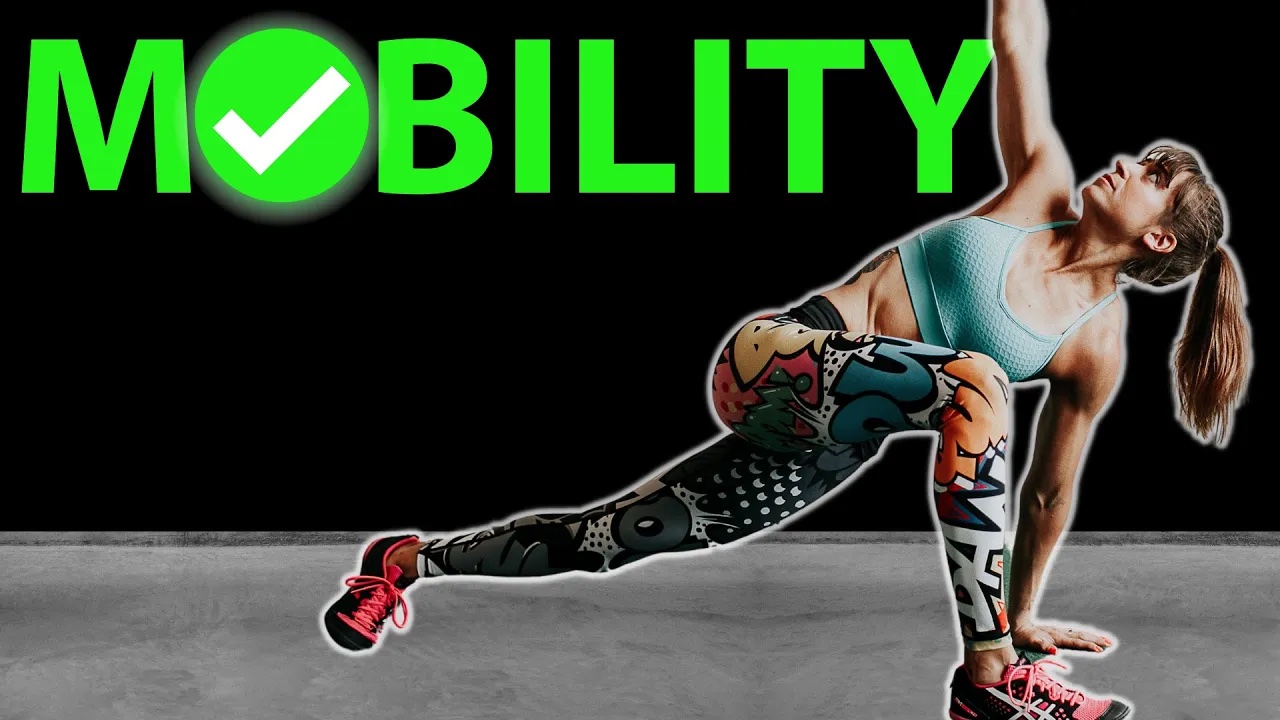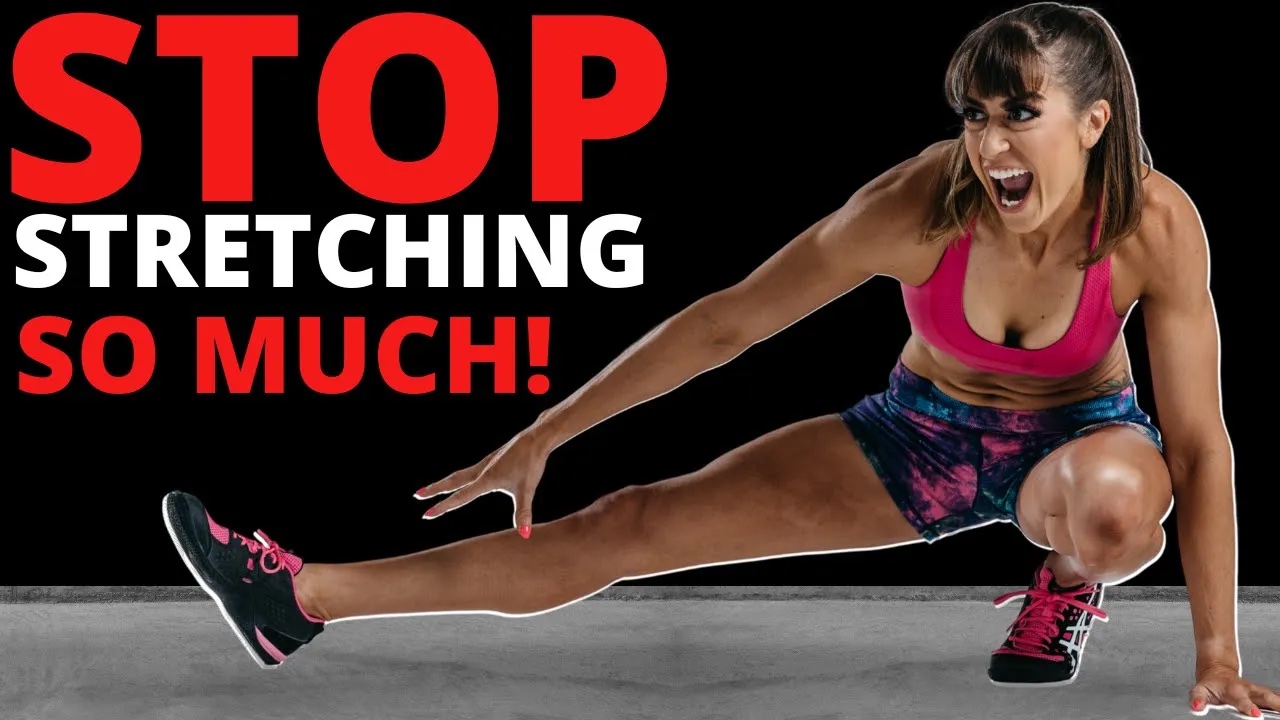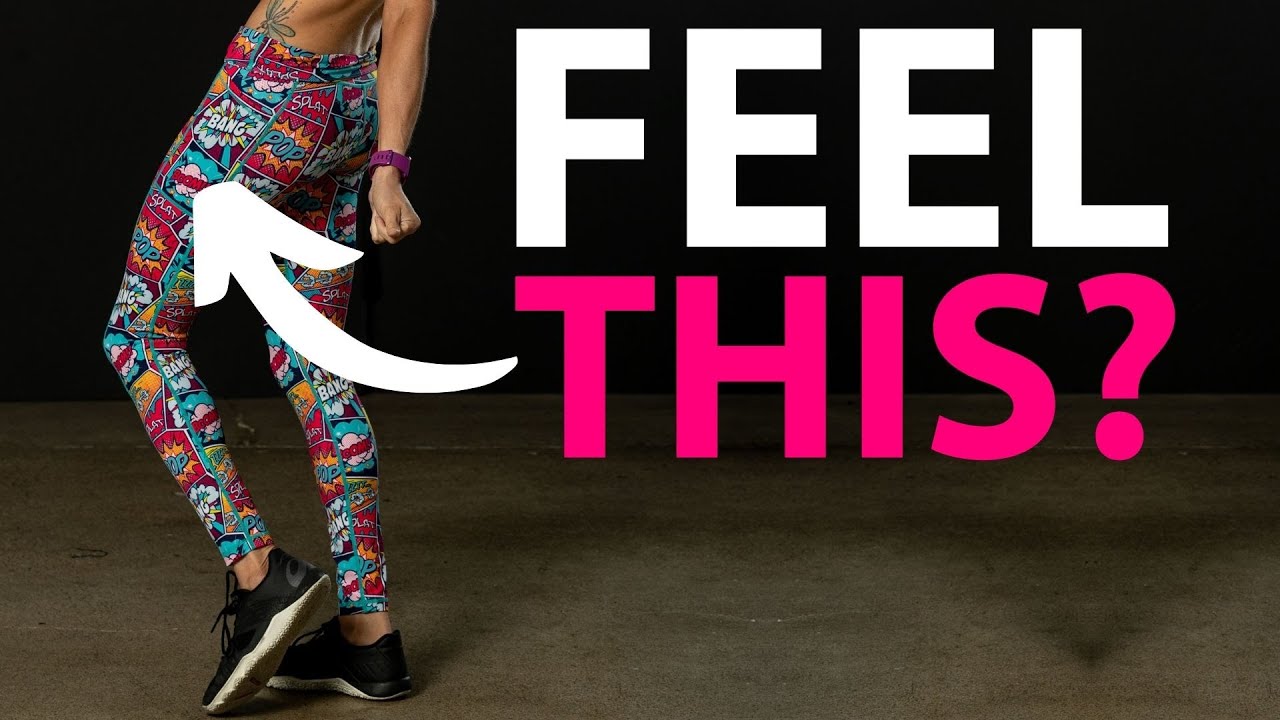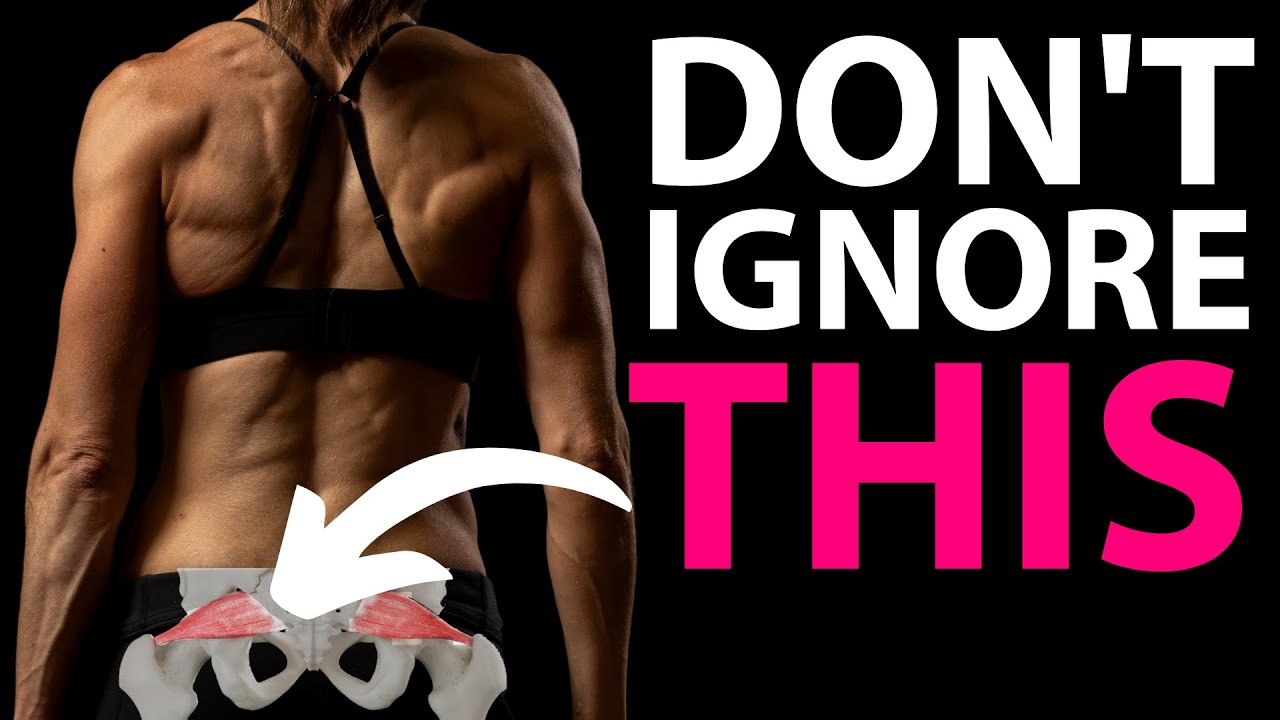
9 BEST Exercises for AMAZING Mobility
Aches and pains add up as we get older. But it’s not our age we should blame.
We instead need to assess our previous injuries and the rehab we did.
As well as the PREHAB we are currently doing.
Because we can never stop doing what makes us better.
Use it or lose it.
Hey guys, it’s Cori from Redefining Strength where we help you move, feel and look your best at any and every age.
Maintaining our mobility means constantly working on our mobility.
But it doesn’t have to mean stretching for hours or full recovery sessions each and every day.
Even 10 minutes as our warm up can really add up AND even help us get more out of our training sessions.
That’s why I want to share 9 moves that address not only commonly tight muscles but also help improve your joint mobility and stability.
These moves cover the full 3-part prehab process of foam rolling, stretching and activation.
This process is so key because the foam rolling helps start to relax tight and overactive muscles so you can then stretch to restore muscles to their proper length tension relationships while mobilizing those joints before you include activation exercises to engage underactive muscles and improve your mind-body connection.
And at the end of this video I’ll share a quick mobility series combining all 9 moves!
So let’s start with 3 amazing foam rolling moves.
First up is Peroneal Foam Rolling.
Your feet and ankles are your foundation. Immobility there can lead to movement compensations up your body.
And that ankle-butt connection is so key.
It’s why we need to address any previous ankle injuries or we may end up with hip, lower back or SI joint aches and pains.
That is why Peroneal Foam Rolling is often an important move to include.
To do this move, a ball works best. Place it on the ground and then relax your leg open so that the outside of your shin is pressed into the ball. Press down into your leg as you start the ball in the top part of the outside of your lower leg.
Circle your foot to create tension and relax it as you press into the ball and breathe.
Then move the ball down to another spot along the outside of your leg and repeat.
Move #2: TFL Foam Rolling
Hip pain, lower back pain, IT Band and even knee issues seem to add up more and more as we get older.
That’s why often we want to focus on our hip mobility and foam rolling our TFL or tensor fasciae latae.
This hip flexor muscle can not only hinder our glute medius from firing correctly, which can lead to hip stability issues, but it can create tension through our IT Band which can even create ankle aches and pains.
To roll out your TFL, a ball works best. The larger or softer the ball, the less it will dig in and if a ball is too much pressure you can start with a roller.
To locate your TFL, lie on your back and place your hands at the side of your pelvis toward your hip bones and then rotate your foot inward. You should feel your TFL flex (this also shows you the far reaching connection this muscle has).
Then move to your side, placing a ball below that muscle and relax over the ball.
Breathe as you hold. You can lift and lower your leg to tense and relax the muscle to help it release.
Move #3: Chest Foam Rolling
Finding after years of hunching over your computer, your posture has become more slouched?
Upper back, neck or shoulders tight and achy?
Then you don’t want to ignore relaxing those pecs!
Tight chest muscles can perpetuate that rounded posture and even restrict your scapular movement, or the movement of your shoulder blades, which not only perpetuates the hunched look but also can lead to neck, shoulder and upper back aches and pains.
While we may feel like there are always trigger points in our upper back, part of that may be due to muscles being overstretched because of our pecs being tight!
To roll out your chest, a ball in a doorway is often most comfortable and easiest to control.
Stand with the ball right inside that shoulder joint under your collarbone and press your chest into the ball in the doors edge. Using a doorway allows you to reach that same arm up in front of you as you hold and apply pressure.
Reach your arm up overhead as you breathe and hold on the spot. You can also move your arm open to the side to stretch and relax.
Then adjust the ball, working down toward your armpit or even toward your sternum.
BUT be careful as you move away from the meatier part of the muscle.
You do want to be gentle as you work along the pec toward your sternum.
You can spend 90% of your focus around that shoulder joint where you will even hit that pec minor!
After foam rolling, you will want to include some stretching.
Especially if you are stretching prior to your workout, you want to include moves that will help you warm up and begin to mobilize those joints, working to improve your range of motion.
The next move we’ll look at is the Ankle Mobility And Groin Stretch.
This is a great move to start working on your ankle dorsiflexion of the ability to draw your toes up toward your shin.
Especially if you’ve worn heels for decades or been an endurance athlete, you don’t want to ignore this amazing ankle stretch!
This is key if you want an efficient running gait or to be able to squat lower without hip or knee pain!
This move will also address your adductor flexibility and help you start to engage those glutes to stabilize your hips.
To do this stretch, set up half kneeling on the ground and move that front foot so it is in line with your back knee and facing perpendicular to that back leg, pointing out.
You want your knee to be in front of your ankle, although you can adjust the position based on your ankle mobility.
Squeeze that front glute to pull the knee open and in line. Then shift your weight to drive that knee forward over that toe without letting your heel lift. Then press back.
Do not rotate toward that leg as you shift laterally.
If this is too much pressure, move your knee back to be in line with your ankle.
Or if you can’t kneel, try standing instead while still focusing on that shift to drive the knee past your toe.
Move #5: Bench Hip Stretch
Lower back, hip and knee pain is something so many of us will experience in life and it is often due to hip flexor tightness and a lack of glute activation.
This hip flexor stretch allows you to focus on activating your glutes to stretch your hips while addressing each side independently.
And by lying on the bench, you help yourself avoid arching your lower back to compensate instead of actually stretching out and mobilizing those hips!
If you don’t have a bench you can do this off a couch, coffee table or even your bed!
To do this stretch, lie back on a bench with the bottom of your butt right at the edge and one leg hanging down toward the ground. This knee will be bent to about 90 degrees.
Bend the other knee and hug it in slightly toward your chest.
Holding that knee in, tuck the other knee up toward your chest, then focus on engaging your glutes to drive that heel back down toward the ground as you extend the leg back down. Feel your butt even kind of lift you a bit on the bench as you extend that hip and feel the stretch.
Pause then tuck the knee back in and repeat.
Move #6: Active Foam Roller Star Stretch
A lack of thoracic mobility as we get older can lead to that humped back posture that non of us want.
And it can also lead to neck, shoulder, upper back and even LOWER back aches and pains.
For instance, a lack of proper thoracic extension can lead to shoulder pain when overhead pressing or us even arching our lower backs to compensate and seek out mobility since we can’t properly extend our mid and upper backs!
This star stretch variation is a great way to really isolate and mobilize our thoracic spine as it is even easy to cheat in other spinal stretches and get mobility from other areas.
To do this stretch, a roller works best although you can put a yoga block or even books to hold your knee on to help isolate your thoracic spine.
Bend your hip to about 90 degrees and place your bent knee on the foam roller to the other side of your body. Pull your knee across your body and press your opposite hand down into your knee to help stabilize.
Put your other hand behind your head. Touch that elbow in front of your face, across your body.
Then, pulling with your back, open that elbow up and open and down toward the ground, opening your chest up toward the ceiling.
Make sure you aren’t just flapping your arm but twisting through your spine. Exhale as you try to relax the back of your shoulder toward the ground then rotate closed and repeat.
Move slowly and really focus on your chest stretching as you engage your back to twist open. Don’t let your knee come up off the roller or block.
After you’ve done your stretching, you then want to focus on activation exercises to establish that mind-body connection and really engage those muscles to feel them working.
Move #7: Single Arm Scapular Push Ups
Scapular control is key if we want to avoid neck, shoulder, upper back and even elbow aches and pains.
It is also key if we want to lift more or achieve that first full pull up!
And being able to truly isolate and control each shoulder blade is key, especially if we’ve had previous injuries that may make us compensate and end up overusing the other side.
This move will really help you focus on that scapular retraction with a very isolated exercise that takes out elbow flexion.
To do this activation move, set up facing a wall and place one hand on the wall at about shoulder height. Your arm will be straight and make sure you aren’t shrugging.
Then keeping your shoulders down and arm straight, but elbow not locked out, pinch your shoulder blade toward your spine.
Do not try to make the move bigger than it is and bend your elbows.
Draw the shoulder blade toward the spine, then push the wall away to draw the shoulder blade back forward.
Focus on this move being small and your upper back working.
Move #7: Side Plank Clams
Core work is key. Most of us even seek out ways to include more. Because our core is the link between our upper and lower bodies, it is key we keep it strong to properly transfer force and react quickly in every day life.
And moves like the side plank clam not only help us avoid spinal issues and back pain but also help improve our shoulder and hip stability.
This move will really target and activate your lats, obliques and glute medius.
To do this activation move, set up in a side plank position with your elbow under your shoulder and your knees bent and legs stacked.
Turn your top foot down in front of your bottom foot.
This internal rotation of your lower leg will help you better target that glute medius without your TFL taking over.
Then as you lift up into the side plank, open that top knee up toward the ceiling. Press your hips forward as you lift and feel your obliques also working to drive that bottom hip up.
Make sure to engage your upper back to support your shoulder.
Do not rotate open with this move, but almost try to stop the leg opening up wider with the side of your butt. Feel your bottom glute medius also working to lift you into the side plank.
Then lower the top leg down as you come back close to the ground and repeat. You can fully lower down but try not to just slump out of the move but maintain some tension.
To modify, you can put your elbow up on a stair or block for a slight incline.
Because the clam itself is an often misused move, I will below to a video with more tips to optimize this exercise, especially if you struggle to activate your glute medius!
Overrated Glute Move: https://youtu.be/6xx-H057YY4
Move #9: Single Leg Reverse Hypers
So many of us struggle to properly engage our glutes, which results in lower back, hip and knee pain…not to mention even ankle issues and injures.
And often, because we aren’t able to engage our glutes optimally, we compensate and rely on our hamstrings.
When our hamstrings start to take over, we can end up with hamstring pulls and strains not to mention perpetuate our back and knee pain.
That’s why moves like the reverse hyper, where we can isolate our glutes and learn to engage them FIRST, are key to include. And doing a single leg version helps you address both side independently.
To do this activation move, lie face down on the ground and relax your chin or forehead into your hands. Bend one knee to about 90 degrees with the heel up toward the ceiling.
Drive that heel up as you press your pelvis down into the ground. Feel your glute lift your quad up as you hyperextend your hip.
Do not arch your lower back or use it to lift and keep your hamstring relaxed, even relaxing your foot if needed.
Focus on your glute lifting and then stopping the move. Pause at the top and lower down.
This isn’t a big move so don’t try to cheat and make it bigger.
Because this move is deceptively challenging if your hamstrings want to compensate, I will link to a video below with more tips and common mistakes.
Underrated Glute Move: https://youtu.be/oiECA2118GI
Bonus Tip:
Now….How can you include these 9 moves in a quick series?
Set a timer for 30 seconds and perform one round through the series. If you’re really focusing on doing this as a warm up, you may consider two rounds through the last 3 activation moves only.
SERIES:
30 seconds per side Peroneal Foam Rolling
30 seconds per side TFL Foam Rolling
30 seconds per side Chest Foam Rolling
30 seconds per side Ankle Mobility And Groin Stretch
30 seconds per side Bench Hip Stretch
30 seconds per side Active Foam Roller Star Stretch
30 seconds per side Side Plank Clams
30 seconds per side Single Arm Scapular Push Ups
30 seconds per side Single Leg Reverse Hypers
For more mobility moves and more on the full 3-part prehab process, check out this video with a full body fix next…
–> The Perfect Mobility Routine (FULL BODY)







